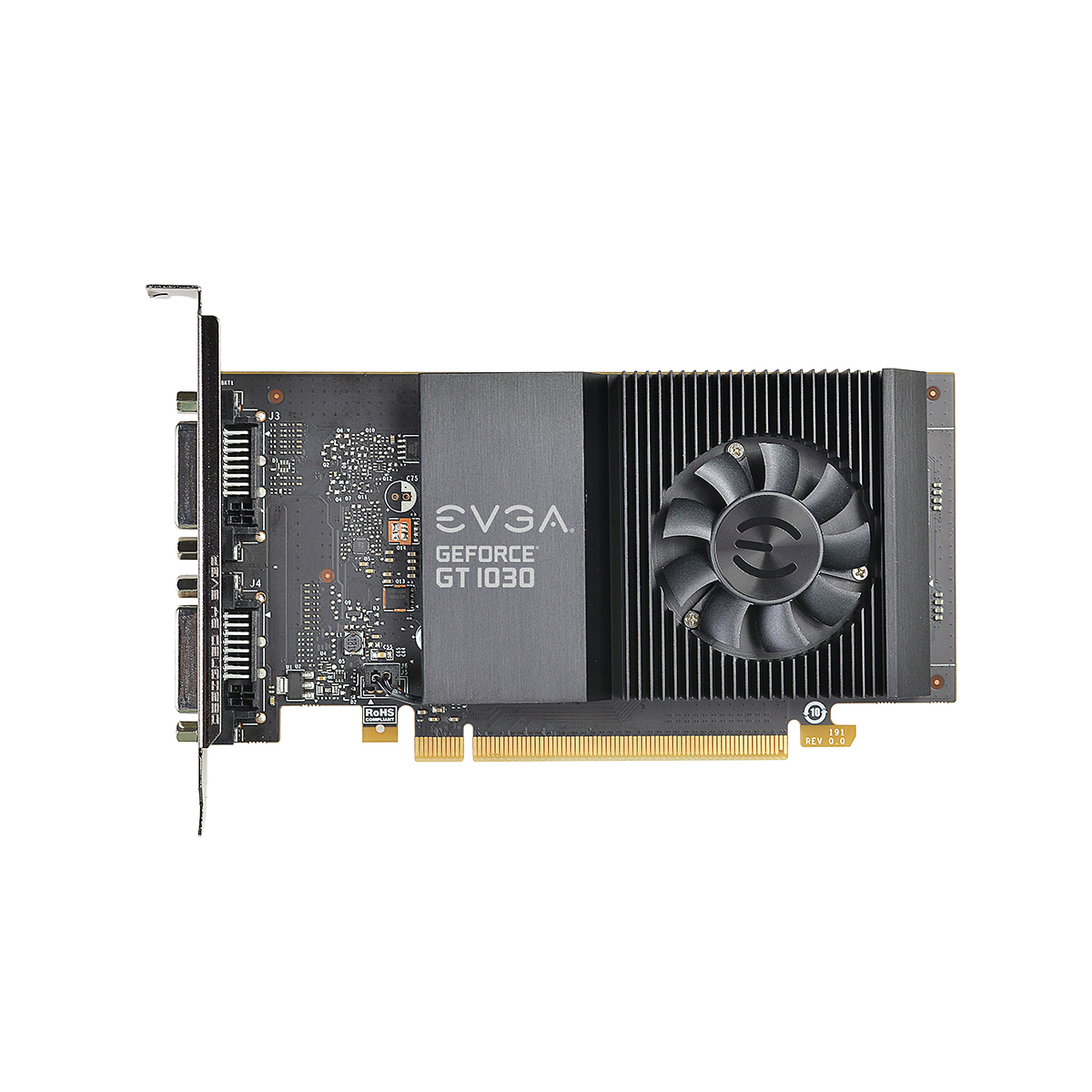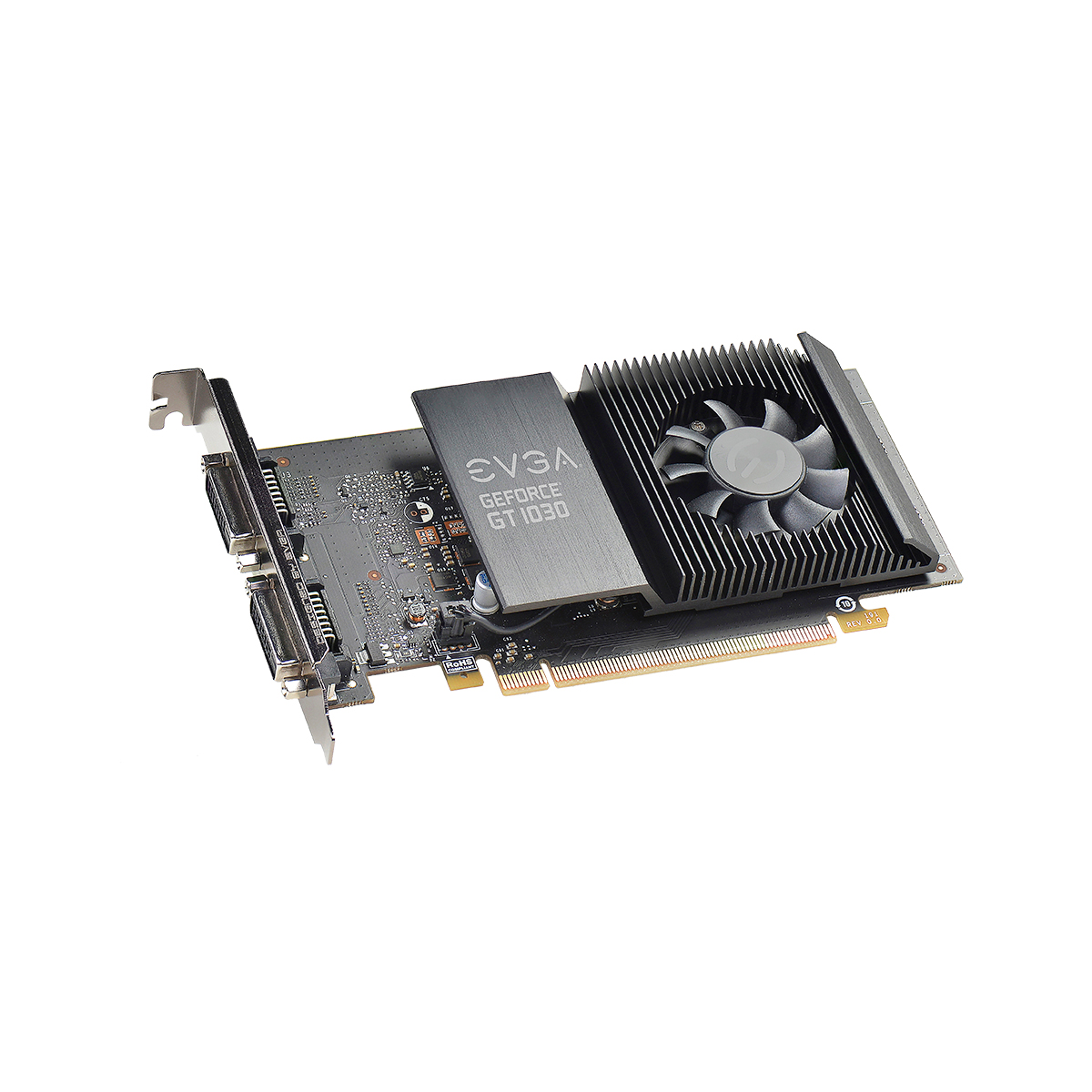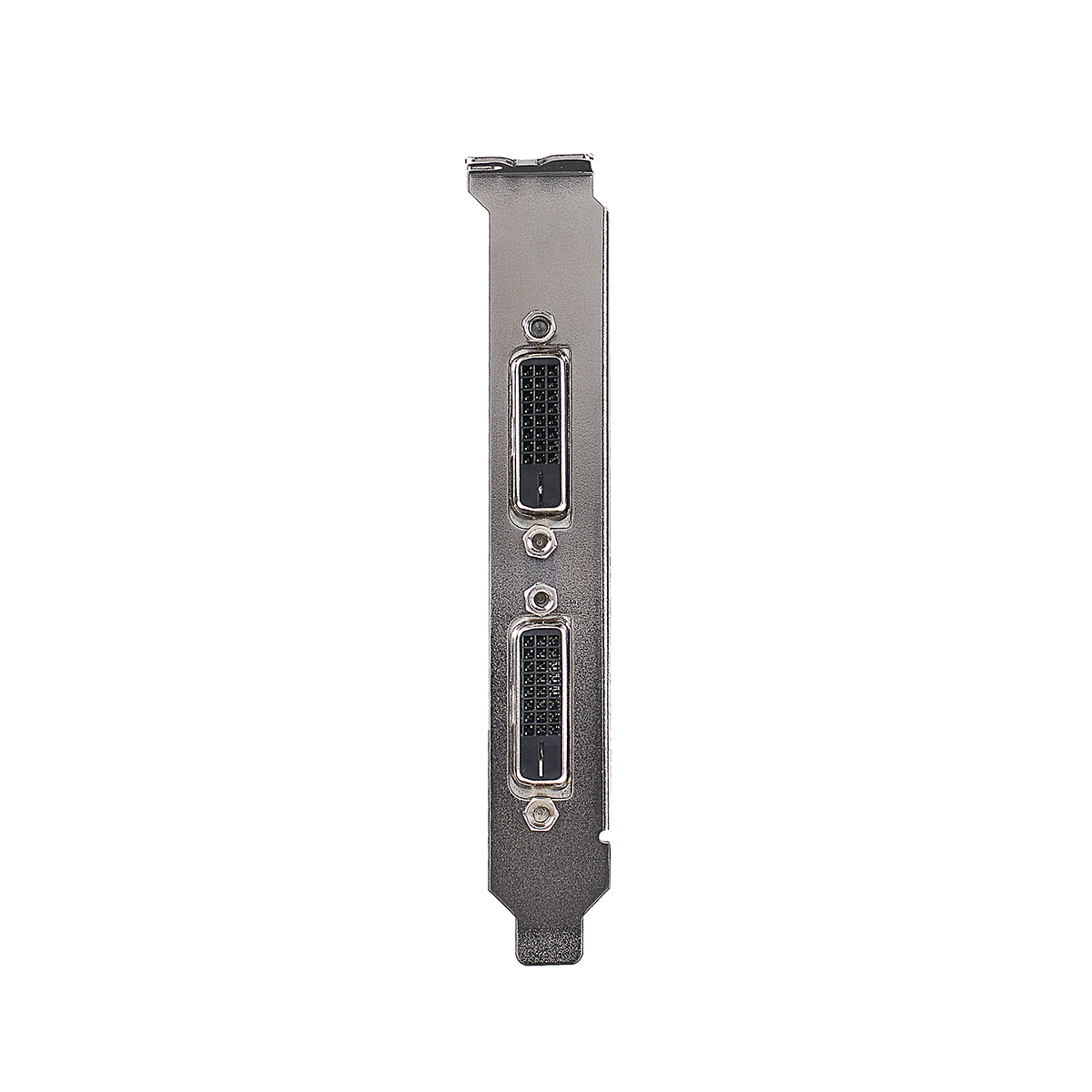
However, not everyone needs that kind of graphics performance. Someone who doesn’t play high-end modern gaming titles or has no desire to give virtual reality (VR) a try could likely get away with a more entry-level option, and that’s exactly what Nvidia has introduced with its newest low-end GPU, the GT 1030.
As Tom’s Hardware reports, Nvidia quietly announced the GT 1030 and it is now available for purchase from a number of graphics card makers. The GT 1030 is designed to compete with Intel’s integrated HD graphics in non-gaming tasks like video editing and photo editing. According to Nvidia, the GT 1030 provides twice the performance in such tasks as the integrated GPU in the sixth-generation Intel Core i5 processor.
In terms of specifications, the GT 1030 uses Nvidia’s new GP108 Pascal GPU and has three Streaming Multiprocessor (SM) units offering 384 CUDA cores, 24 TMUs, and 16 ROPs. The cards utilize a 64-bit memory interface and can support up to 2GB of 6GHz GDDR5 memory, which works out to 48GB/s of memory bandwidth.
One of the first to offer GT 1030 cards is EVGA, which has introduced three options based on Nvidia’s newest budget option. These cards differ most in terms of their designs and cooling solutions and include single slot, low profile, and passive-cooling low-profile versions. Each of the cards is clocked at 1,290MHz with boost up to 1,544MHz, and each comes with the standard 2GB of 6GHz GDDR5 memory.
Pricing starts at $80 for the low profile EVGA card, which is available today, with the other two models to be available in the coming weeks. Other manufacturers are planning to introduce GT 1030 cards as well. Nvidia itself hasn’t yet posted information on its GeForce site, demonstrating that it is far more focused on higher-end solutions.






